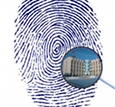
The concept of theft in domestic forensics.
Forensics — definition:
The very definition of forensicsas a science is based on several main points: development of a system of special techniques, methods and means of collecting, examining and evaluating forensic evidence; their application in criminal proceedings for the prevention, detection and investigation of crimes; their use in judicial consideration of criminal cases.
There are three sections of forensic science, the definition of which we will give below.
So, this is forensic technology — a system of special techniques and scientific and technical means for collecting and examining evidence.
The second section is called forensic tactics — a system of techniques that allow for the effective use of all activities in the field of solving crimes, taking into account the nuances of the case.
Forensic technology and tactics are inextricably linked, since the development of forensic technology contributes to the emergence of new tactical techniques for its use.
Forensic science methodology is a set of techniques, methods and tools used in the investigation of specific types of crimes, and constitutes a methodology for investigating individual types of crimes.
Domestic forensics
Let's briefly consider how this science developed in our country.
Domestic forensics arose at the end of the 19th century, when natural scientific methods began to be used in investigating crimes.
The main breakthrough in the development of science occurred in 1890, when an anthropometric station began to operate as part of the police, and in 1889 a forensic photography laboratory was organized at the St. Petersburg District Court. Forensic examinations and technical examination of documents were carried out here.
Next, scientific and technical units were created in the criminal investigation system, work was carried out to train forensic specialists and introduce scientific and technical methods and means into investigation practice — forensic photography, «verbal portrait», fingerprinting, criminal registration.
An important stage in the history of of domestic forensic science is the period of the 20s, when works were published devoted to the study of individual issues of forensic technology and tactics. In the 50s, the organization of scientific and technical departments of city and district internal affairs agencies began. The post-war period is characterized by the development of the theoretical basis of forensic science.
Forensic science — theft
Next, we will consider a specific area of application of forensic science– thefts.
The characteristics of this type of crime include the following parameters:
—frequent places: apartments, private homes, enterprises, institutions, joint-stock companies, individual private enterprises, cars, summer cottages, hotels, hostels, train stations, stations, trains, public places;
— the subject of theft: money, jewelry, complex household, television, audio and video equipment, wearables, vehicles, expensive tableware, collectibles, art treasures and antiques.
Theft in criminology is characterized by a variety of methods of its commission, which is difficult to organize.
The choice of the method of theft is determined by the criminal and professional skills, the situation at the theft site, and the availability of the necessary technical and transport means.
There are two main types of theft in accordance with the chosen method:
— thefts with overcoming (by breaking in, selecting unlocking devices, for example, breaking into safes, etc.) locking devices, barriers and storage facilities;
— thefts with free access to the place where the property is stored.
Penetration into the premises is carried out by breaking locks, doors, windows or by breaking through ceilings, walls, floors, sometimes by digging.
Locks are broken with master keys, selected keys, by pressing soap, plasticine, or another viscous substance into the lock hole, by inserting halves of a safety razor blade, a piece of celluloid into the lock hole, by drilling a cylindrical mechanism, by breaking out panels, by cutting out locks or by drilling out the locking mechanism.
Penetration into premises by means of free access is carried out through the roof and balconies of multi-story buildings; through windows and doors; with the permission of the owners — by deception.
During the investigation of theft, persons vested with such authority interrogate persons responsible for its safety:
what was stolen;
were there items left at the scene of the theft that were more valuable than the stolen items, and where were they;
when the property stolen by the criminals was received;
who knew about its receipt and storage location; what are the generic and individual characteristics of the stolen items;
what is the value of the stolen item;
the time of the theft;
when was the stolen item last available; when and who discovered the theft, under what circumstances;
for how long could the theft have remained undetected due to certain circumstances;
what are the operating hours of the enterprise;
who has access to the storage facilities and how are they guarded;
are the premises checked after work is over in order to identify any persons remaining there;
were there any deviations from the work schedule on the day of the theft;
if there were, what were they and on whose instructions, who could have known about them;
were there any changes in the composition of the regular security guards, what were they, who could have known about them;
how did they affect the security of the facility, etc.

Добавить комментарий